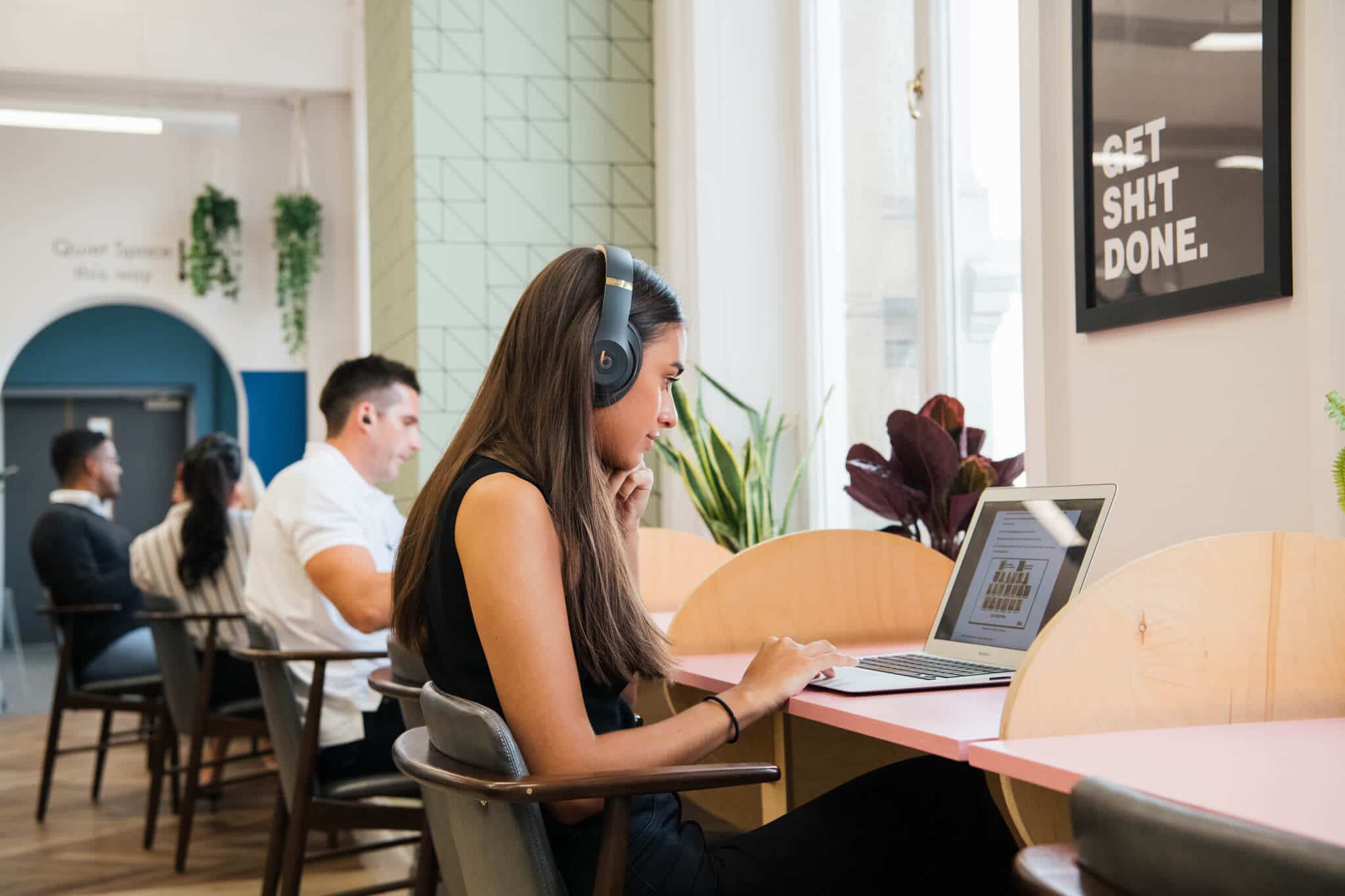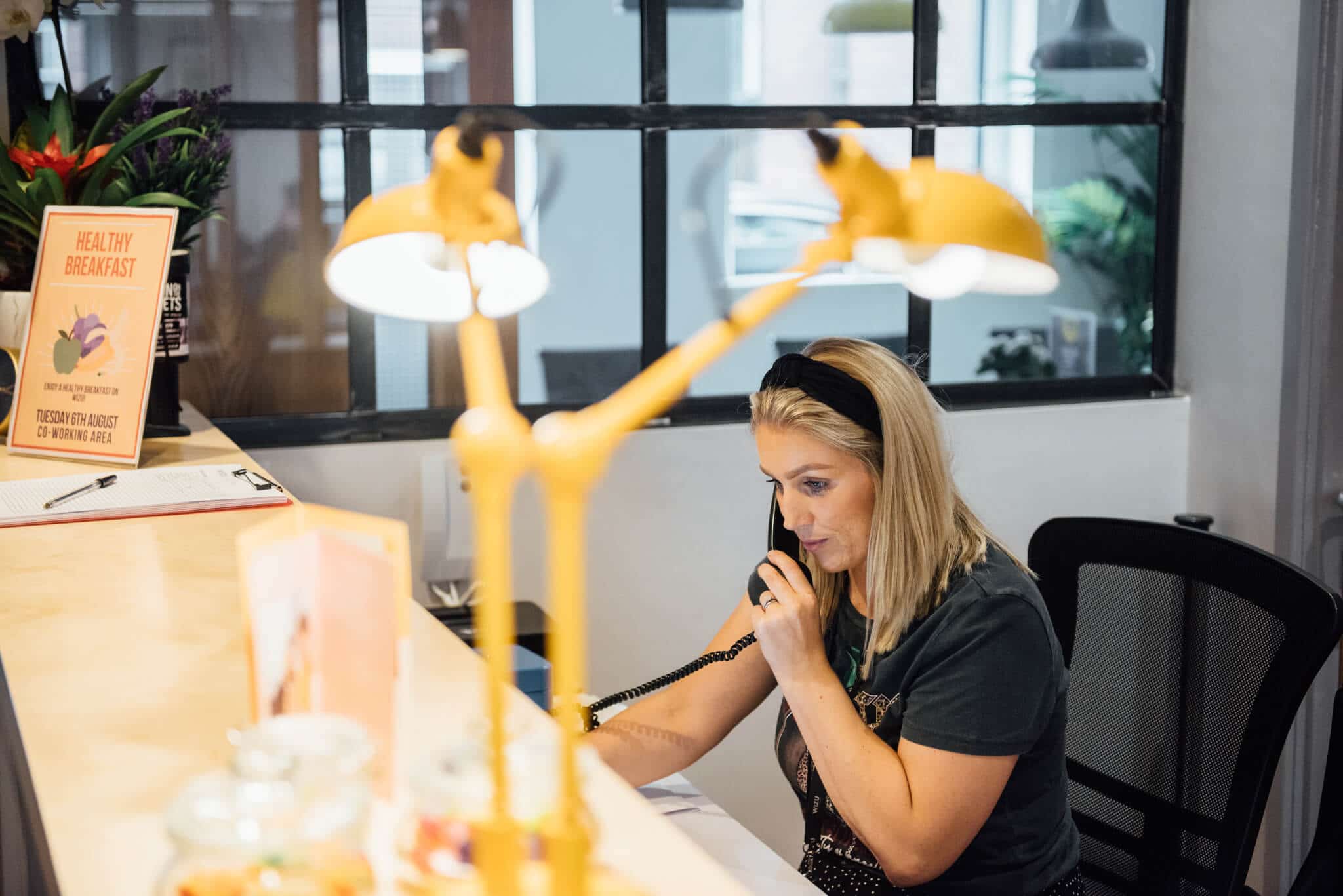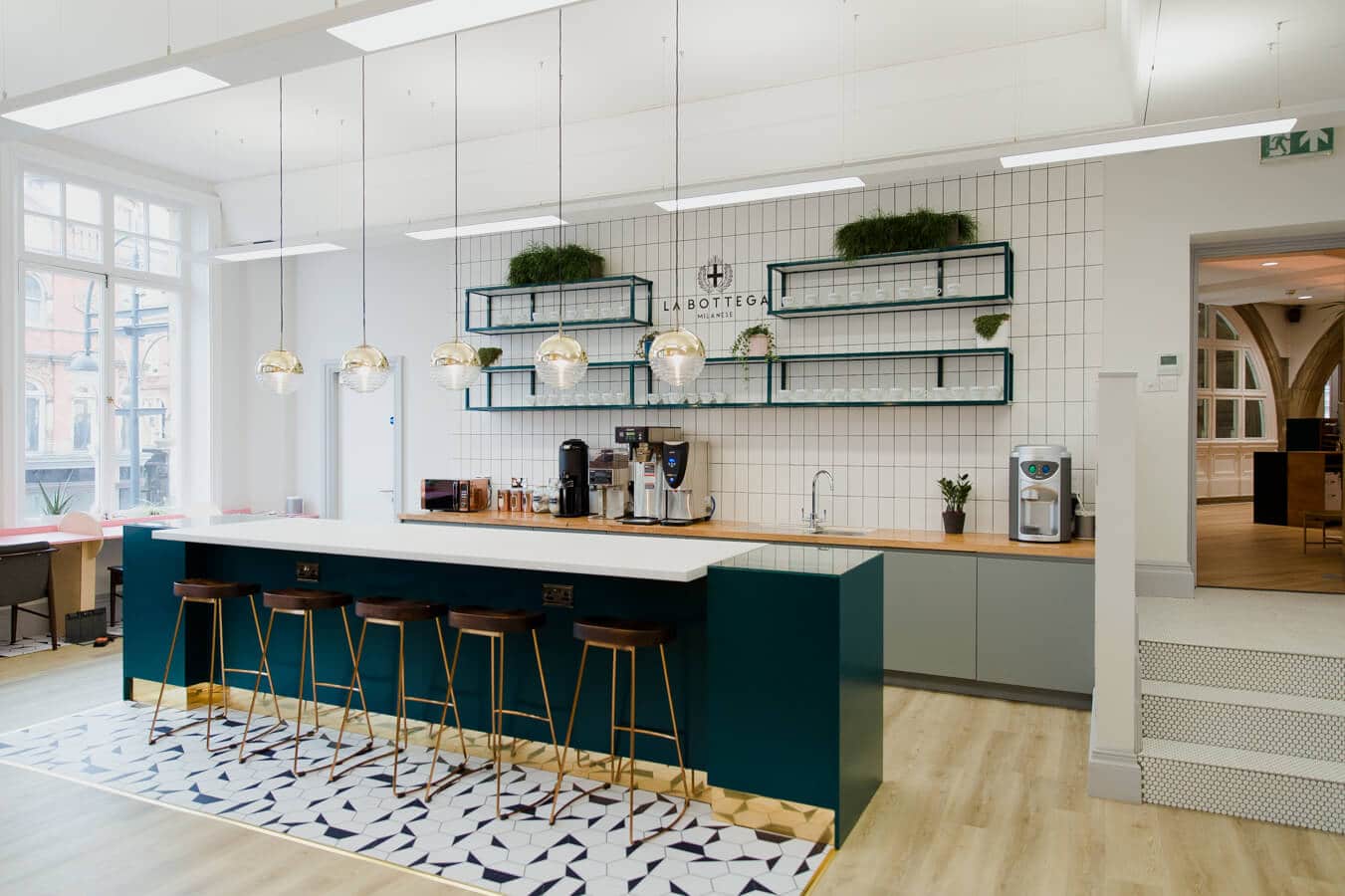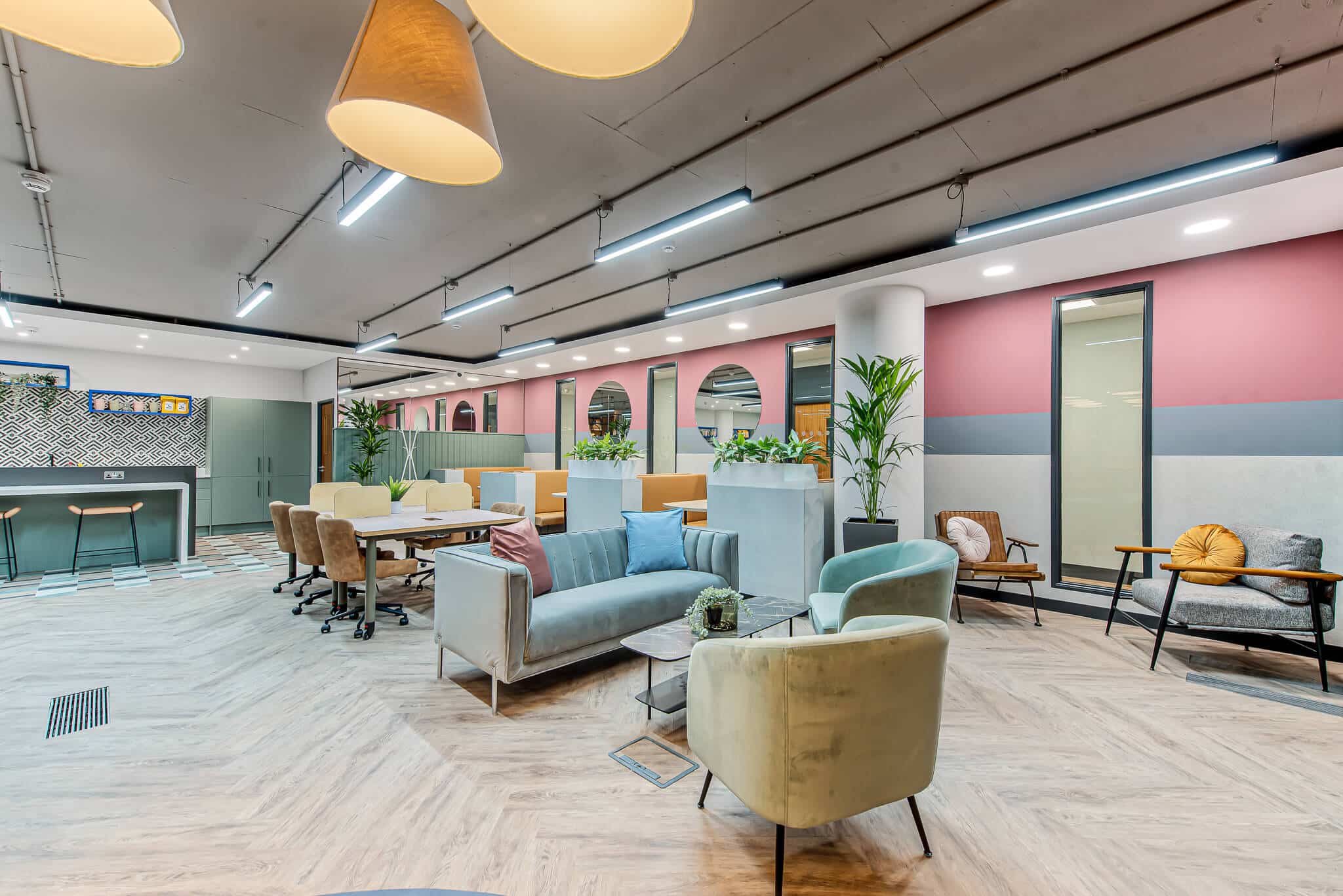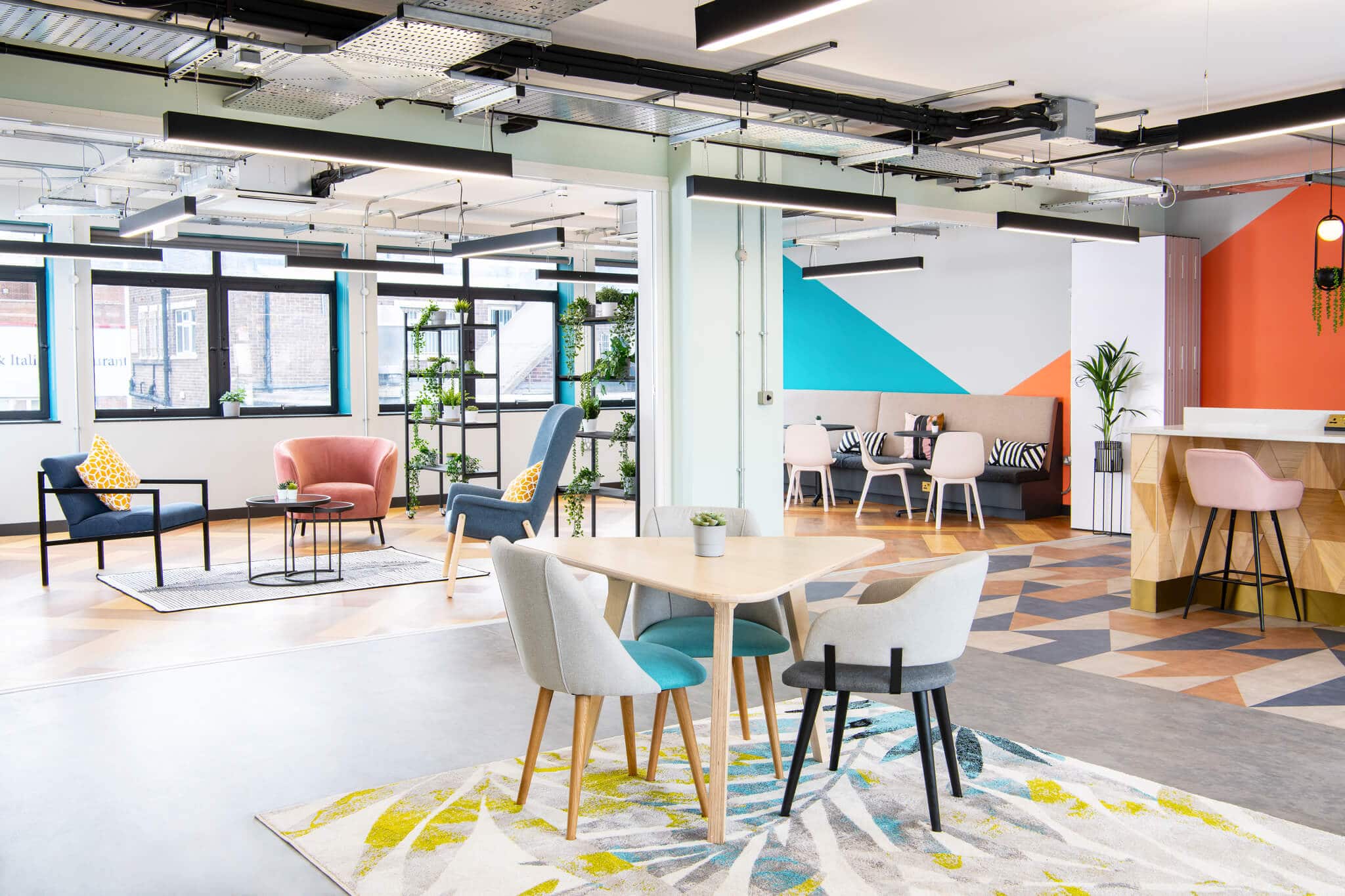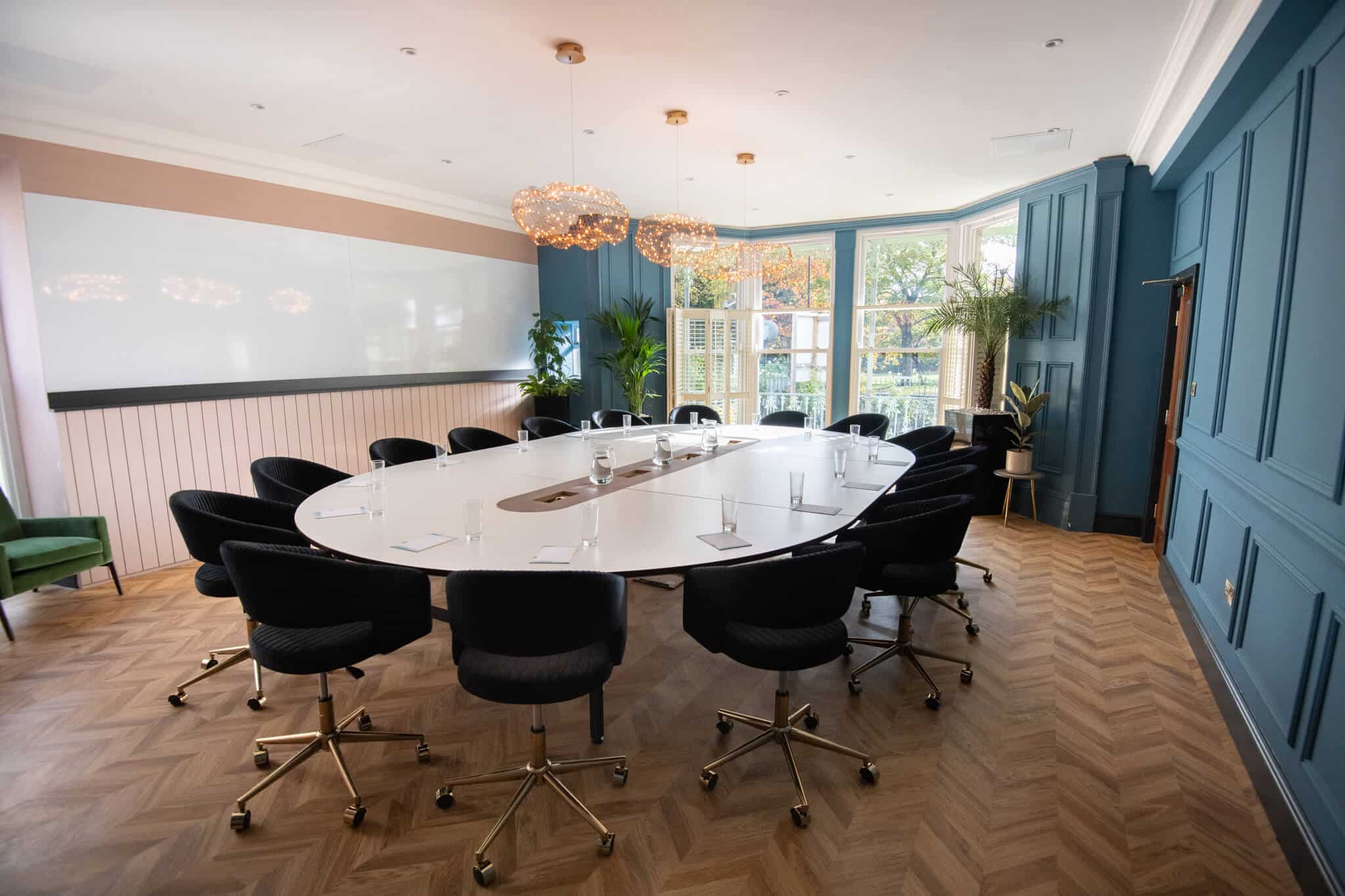Coworking Guides
A Quick guide to flexible workspaces

Working from a home office as a freelancer is a dream for many. But the truth is that working from home can come with various downsides. These include distractions from family, pets, chores, and more. Then there’s the fact that you work alone day in and day out, missing the socialisation that goes with working in an office.
Are you ready to take your freelance business to a flexible office space? Then read on for tips that we’ve put together on what to consider before making such an important move.
Blog post contents
What is a Flexible Office Space?
A flexible office space is an alternative to a traditional office space. The reason it’s flexible is that the contract offers more flexibility. You can choose to rent a workspace on a day-to-day basis. There are also many flexible leases that are based on a rolling monthly basis, rather than a fixed term. Either way, you have more flexibility.
A flexible office then gives you the opportunity to scale your business as needed. If your freelance business is booming, then you have the chance to rent a workspace that suits your needs. However, if business gradually, or suddenly, declines, then you have the option to cancel the contract without penalties. But keep in mind that each office space provider will their own specific terms, so read the contract before you sign to know what the lease covers.
What Types of Flexible Office Spaces Work for Freelancers?
There are three main types of flexible office spaces that work well for freelancers. Each one has it’s own pros and cons.
Coworking office space: this type of office space is usually in an open-plan office, where desks or tables are placed around the room. Each desk may be used by a different company, industry, or individuals, who then work beside one another in this large space.
With a coworking space, it’s common to use a new desk each day, as workstations may not be assigned. Instead they’re offered on a first-come-first-serve basis.
Serviced office: this is another type of flexible office space that may be a good choice for freelancers. Here, it’s possible to rent a single, private office, an office for multiple employees that includes private office spaces, or even an entire floor for a larger organisation.
This type of office space provides a more private area to work in, and a dedicated space for one person or a business. They will work in the same office space every day. In this way, a serviced office is a little more like a traditional office. However, the flexibility is found in the terms of the lease.
How to Choose the Right Type of Office Space for Your Freelance Business
So, how do you figure out which type of flexible office space is best for you? Here are some tips on what to consider for your working needs:
1). Location: look for a flexible office space that’s closer to your home. This helps to keep the commute short, if you take public transport, drive in a car, or even ride your bike. An office space should also be located in an area that is easy for clients and business partners to find and access. So, look for public transport hubs, highway access, and more.
2). Privacy: this may be important to your freelance business, depending on the type of work you do or your industry. Also, some people don’t work well in a busy, noisy environment. Consider if you need privacy and if you work well in a lively environment.
If you can handle the hustle and bustle, then a coworking space make work well for you. On the other hand, if you need more privacy and can’t deal with the noise and activity, then you may want to go with a private service office instead.
3). Security: this is extremely important no matter what type of work you do. Your office space should be in a facility that provides plenty of security to keep you and everyone safe. So, be sure to inquire as to the level and type of security offered.
Also ask if the facility is open 24/7. If so, then do they have security in place for people who need to work at night? What type of security do they provide? Does this include security officers, cameras, and more?
4). Internet connections: look for an office space that offers high-speed Internet, along with both wireless and wired connectivity. This way you’ll have the option to connect either way, depending on the type of connectivity your devices require.
The service should also be reliable and robust, and not suffer from frequent downtime. Also ask if the Internet connection is included in the contract, or if there’s an extra charge to access. In most cases, flexible office spaces include the Internet in their contract, but there are some rare instances where facilities may charge for Internet connectivity.
Checking this out before signing the contract could save you a lot of money in the long run and keep you safe from hidden fees.
5). Amenities: most flexible office spaces include a number of amenities in their contract. These will vary by facility, but can include:
- Internet
- Free parking
- Reception area/receptionist/administration professionals
- Access to a fully stocked kitchen
- Unlimited access to coffee and tea
- 24/7 access
- Access to business equipment (printers, and more)
- Storage facilities onsite
- Onsite gym & showers
- Bike storage
Look for the type of amenities that will be a good fit for your freelance business.
6). Price: your budget is important, so you’ll want to choose a flexible office space that comes at a price you can afford. The goal is to avoid overspending and staying within your budget, otherwise your business could suffer. So, search for flexible offices that come at a price you can afford. Remember that some facilities may have a day-to-day contract, while others have a rolling monthly plan. This way, you’ll have more flexibility to scale up or down as needed.
Moving your freelance business to a flexible office space can provide you with many benefits. Not only will you have better work/life balance, but you’ll have a place of business that’s sure to impress. The important thing is to find an office space that comes at a price you can afford, is in an easily accessible location, and includes amenities that will help your business. And go with a flexible contract—you won’t be sorry!
How Modern Office Design Can Attract & Retain Top Talent
In many industries and businesses, management has to deal with the issues of how to attract and retain top talent. It’s a difficult and expensive process to look for the right people and then keep them onboard.
What does this have to do with modern office design? You may be surprised to find that it has plenty do with finding and retaining the right people. It’s not just about company culture anymore.
Some companies have tried all sorts of creative measures to make their company culture attract talented people. For some this has meant including some elements that are not usually found in an office environment. Companies have chosen to get creative by including playground slides (sized for adults), setting up a meeting room to resemble a train car, and other attempts to be creative and innovative. However, you don’t have to go that far in creating a modern office design that is attractive. In fact, it pays to be innovative, without going to drastic measures with office design elements.
Create an Agile Workplace
What is an agile workplace? It’s one that’s set up to be adaptable. Design elements are meant to encourage employees to move around and work in different areas, sometimes alone or in shared workspaces. Employees can work where and in a way that’s comfortable for them.
An agile office is one where the physical environment and design elements are flexible. These days, employees prefer a workspace where they can relax and socialise or work in a quiet area when they need to focus. They also enjoy having a place where they can lease tension such as a game room, a reading room, and more.
This means that an agile workspace must have a versatile design, which can include a room created for specific tasks. This may include standing desks for those who have a lot of energy as they work. Or the workspace could include individual design elements such as short walls to put in between workstations, which can be moved, and desks brought together to collaborate on a project.
These are some elements for an agile office space. Your business can include:
- Sound-proof privacy pods (for phone calls, places for people who need a quiet place to work, and more)
- Social breakout spaces (where employees can relax, play games, talk with one another, enjoy some quiet time)
- Workspace (that is designed into specific zones based on tasks or work preferences)
- IT systems (that support working wirelessly with in the office)
Workspaces to Promote Wellbeing
More and more people are becoming more concerned about their wellbeing and the environment they work in each day. In fact, this is one design element that can attract and retain employees. So, what does it mean to have an office design that promotes wellbeing?
Here everything from the type of furniture to the lighting, and more are involved in workspaces that promote wellbeing. Office layout and design elements need to promote wellbeing both physically and mentally.
This can be achieved through the use of:
- Ergonomic seating, workstations, devices
- Design elements that resemble the home (such as sofas, armchairs, rugs)
- On-site gym (helps employees stay in shape and work off stress)
- A mix of social and private spaces (so everyone can find the best environment to be more productive and comfortable)
- Natural and biophilic elements (bring in more natural light, plants, and other natural touches to the décor)
Shareable or Coworking Workspaces
A shareable or coworking workspace is one that allows employees to easily collaborate on projects, or simply work side by side. However, one downside is that companies must take into consideration that some employees will not work well in these types of spaces. Some individuals need quiet places to focus on their work, while others simply feel more comfortable on their own. For this reason, it’s always a good idea to create a shareable, coworking spaces, while also including plenty of space for those who need and prefer to work in quiet on their own.
The key to shareable and coworking spaces to create an engaging environment. This might mean including playful art & design elements, bright colours, a company’s branding elements, and more. A lively environment is crucial for these types of spaces.
This is where a little innovation can go a long way. You might consider adding that adult-sized slide, or a ball room, or other playful elements.
Some other design elements for these types of spaces include:
- Prominent artwork (bright, colourful, inspiring pieces)
- Sculptures, living walls (which bring in natural elements—the living wall is created with living plants and natural elements)
- Digital wallpaper and bespoke backdrops
The key here is not to get carried away with innovation and playful, but to include the right balance of these elements in the workspace to make it more inspiring, upbeat and productive.
Design Workspaces with Your Company & Industry in Mind
Now you have some ideas on how modern office designs can be used to attract and retain employees. The next step is figuring out what type of modern office design is best for your company. Each business is different and unique; what works for one company may not work for another company. The key is to keep your office design in tune both with your company and industry. This means the design should fit your company’s culture & image, as well as the company’s industry.
Your company culture & image are the “personality” and values that the company promotes and is identified with. The industry you’re in can also determine the type of office design layouts and design.
For example, tech companies are more innovative and geared to younger employees, so they tend to have an open-style office design and layout, while financial institutions, which are usually more conversative, are geared toward a more traditional office design.
These are all ways to incorporate modern office designs for your company. Having the right type of layout and décor, and flexibility built in can go a long way in attracting and retaining the top talent your company needs.
How Flexible Office Spaces Can Make Your Business Thrive (500)
Flexible office spaces offer many benefits for your business. But how can flexible office spaces make your office thrive? Let’s take a look!
1. Reduced Occupancy Costs
A flexible office space is cheaper than leasing or buying a traditional office space. In addition, your business can save a lot of money by choosing flexible office space. For startups and freelancers, the flexible space also offers an attractive workplace at a fraction of the cost.
In addition, the space is also more professional than meeting clients at a home office, café, or other public spaces. And your business has access to amenities it would otherwise have to pay for.
The flexible office saves your company money, allowing it to save capital for future expansion.
2. Protection from Market Volatility
Another way a flexible office space helps your business thrive is by protecting it from volatile markets. With a flexible office, your business has the ability to conserve money and spend only a small amount during the leaner times. The result is your business has some breathing room and space to grow, even when times are tough.
When markets fluctuate, as they will, you can remain confident that your business will survive and thrive at a time when other businesses are suffering losses. You’ll have the capital to scale when times are better again.
3. Explore New Markets
New businesses that are experiencing growth must keep their expenses under control. The company may want to try new markets, but the expenses of a traditional office can delay this expansion.
On the other hand, a flexible office space can save money and allow a business to explore new markets at the same time. There’s no need to lease a traditional office when your company can opt for a flexible office space in a new city or region.
It’s easier to manage the risk of expanding by keeping costs under control with a flexible office. You can choose a short-term lease when exploring new markets. If things don’t work out, you haven’t made a huge investment. On the other hand, if your business is successful, the flexible office space allows your company to expand without major capital investments.
4. Maintain a Professional Image
When meeting a new client, your professional image is crucial. If you’re working from a home office, your client may not feel as confident in your business. You and your company may not come across as professional.
However, flexible office space creates a professional image and credibility. Leasing a flexible office means you also have access to meeting rooms and other facilities you may need. In that case, your client comes away with a higher level of trust and confidence and sees you as a professional.
5. Convenience
Flexible offices are usually located in central locations, near other successful businesses.


